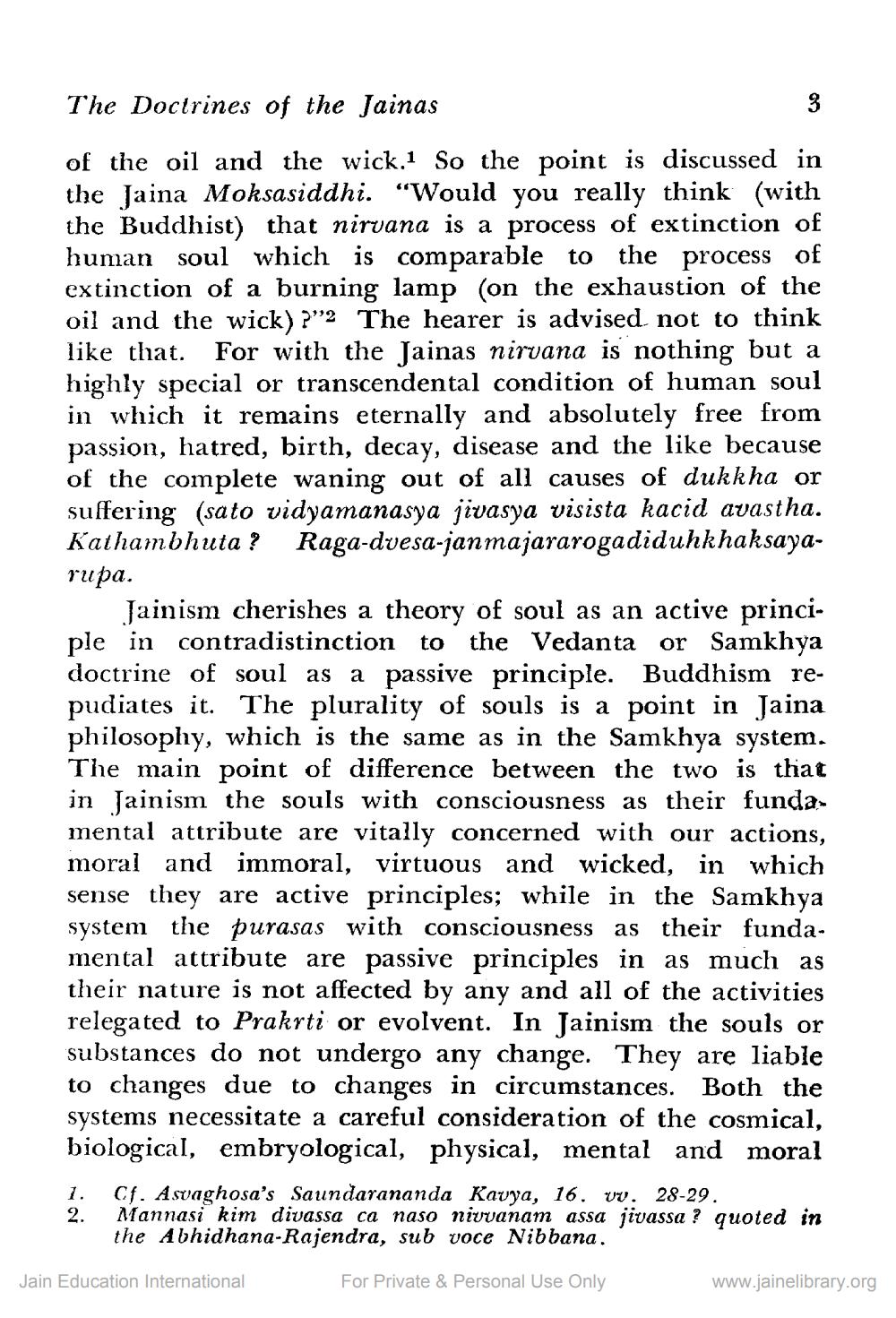________________
The Doctrines of the Jainas
3
of the oil and the wick. So the point is discussed in the Jaina Moksasiddhi. "Would you really think (with the Buddhist) that nirvana is a process of extinction of human soul which is comparable to the process of extinction of a burning lamp (on the exhaustion of the oil and the wick) ?"2 The hearer is advised not to think like that. For with the Jainas nirvana is nothing but a highly special or transcendental condition of human soul in which it remains eternally and absolutely free from passion, hatred, birth, decay, disease and the like because of the complete waning out of all causes of dukkha or suffering (sato vidyamanasya jivasya visista kacid avastha. Raga-dvesa-janmajararogadiduhkhaksaya
Kathambhuta?
rupa.
Jainism cherishes a theory of soul as an active principle in contradistinction to the Vedanta or Samkhya doctrine of soul as a passive principle. Buddhism repudiates it. The plurality of souls is a point in Jaina philosophy, which is the same as in the Samkhya system. The main point of difference between the two is that in Jainism the souls with consciousness as their funda mental attribute are vitally concerned with our actions, moral and immoral, virtuous and wicked, in which sense they are active principles; while in the Samkhya system the purasas with consciousness as their fundamental attribute are passive principles in as much as their nature is not affected by any and all of the activities relegated to Prakrti or evolvent. In Jainism the souls or substances do not undergo any change. They are liable to changes due to changes in circumstances. Both the systems necessitate a careful consideration of the cosmical, biological, embryological, physical, mental and moral
1.
2.
Cf. Asvaghosa's Saundarananda Kavya, 16. vv. 28-29. Mannasi kim divassa ca naso nivvanam assa jivassa? quoted in the Abhidhana-Rajendra, sub voce Nibbana.
For Private & Personal Use Only
Jain Education International
www.jainelibrary.org




